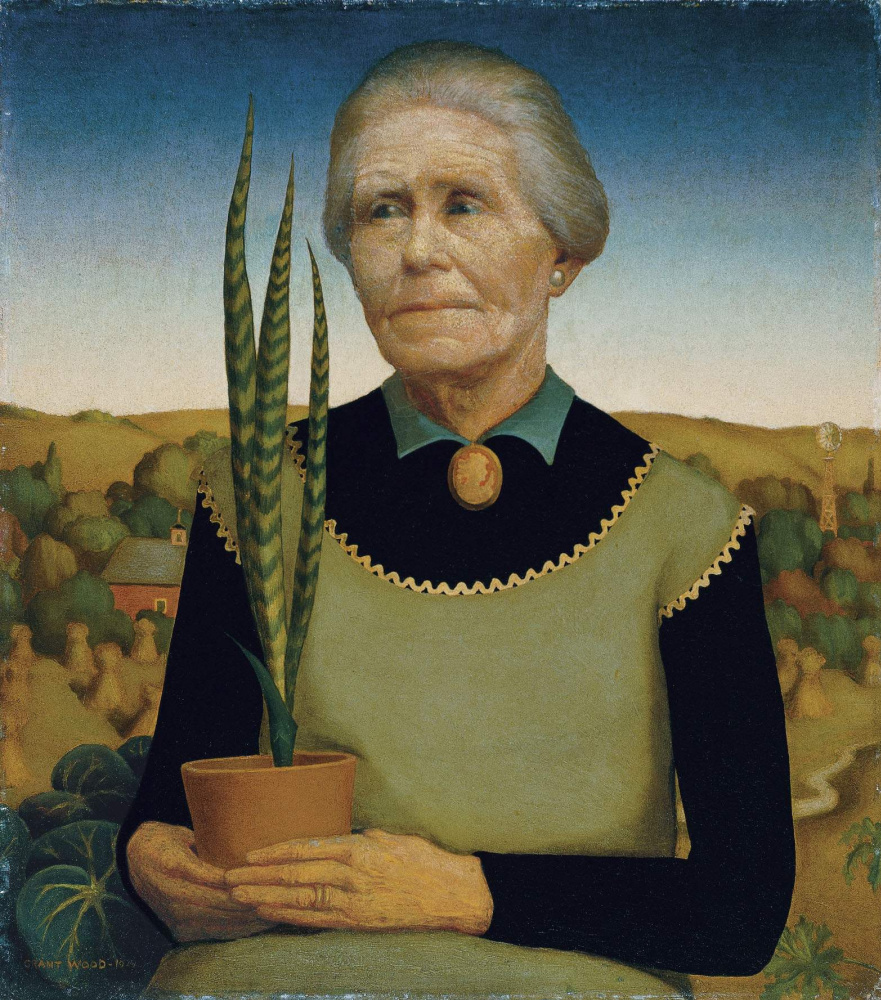log in
Enter site
Login to use Arthive functionality to the maximum
Woman with flowers
Grant Wood • Painting, 1929, 52×45.7 cm
Description of the artwork «Woman with flowers»
Despite the fact that it is not spoken directly on the canvas "Woman with flowers" depicted, of course, the artist's mother. The picture was painted only a year before the famous "American Gothic"but critics simply do not notice it.
Hattie and Nan was the permanent music of the wood. After his father's death 10-year-old Grant had in fact to take his place, being the only man in the house. And so it was that for both women it was like playing two roles. For Nan he was both brother and father, and for mother – son and companion. In cedar rapids the Woods family lived in the house next to the funeral home. Them does not frighten such a neighborhood, Grant even hung the coffin of the XIX century instead of a door to his workshop. The artist's mother and sister lived not just in the same house, but in the same room. It is not surprising that all three are linked exclusively by strong bonds. Wood and Hattie sometimes even mistaken for a married couple.
The artist has never hidden his tender affection for the mother. In the end, she became his accomplice in childhood, when the boy was learning to draw a secret from a strict father. One of his favorite places to paint was the space under the kitchen table. Hetty pulled up one edge of the tablecloth to the floor to securely hide the son from prying eyes. Later wood wrote: "The only way I had the opportunity to be in solitude and watch the world of adults through a red jacquard tablecloth". This image of a red thread passed through all his work. The artist covers this tablecloth dining table ("Dinner for Molotilov", 1934), leaves subtle hints in the costumes of their heroes ("Miss France", 1929, "Plaid sweater",1931) and in the constantly recurring motif of the curtain ("Portrait Of Nan", 1933, "The perfectionist", 1936, "Tale Of Parson Weems", 1939).
Author: Eugene Sidelnikov
Hattie and Nan was the permanent music of the wood. After his father's death 10-year-old Grant had in fact to take his place, being the only man in the house. And so it was that for both women it was like playing two roles. For Nan he was both brother and father, and for mother – son and companion. In cedar rapids the Woods family lived in the house next to the funeral home. Them does not frighten such a neighborhood, Grant even hung the coffin of the XIX century instead of a door to his workshop. The artist's mother and sister lived not just in the same house, but in the same room. It is not surprising that all three are linked exclusively by strong bonds. Wood and Hattie sometimes even mistaken for a married couple.
The artist has never hidden his tender affection for the mother. In the end, she became his accomplice in childhood, when the boy was learning to draw a secret from a strict father. One of his favorite places to paint was the space under the kitchen table. Hetty pulled up one edge of the tablecloth to the floor to securely hide the son from prying eyes. Later wood wrote: "The only way I had the opportunity to be in solitude and watch the world of adults through a red jacquard tablecloth". This image of a red thread passed through all his work. The artist covers this tablecloth dining table ("Dinner for Molotilov", 1934), leaves subtle hints in the costumes of their heroes ("Miss France", 1929, "Plaid sweater",1931) and in the constantly recurring motif of the curtain ("Portrait Of Nan", 1933, "The perfectionist", 1936, "Tale Of Parson Weems", 1939).
Author: Eugene Sidelnikov


